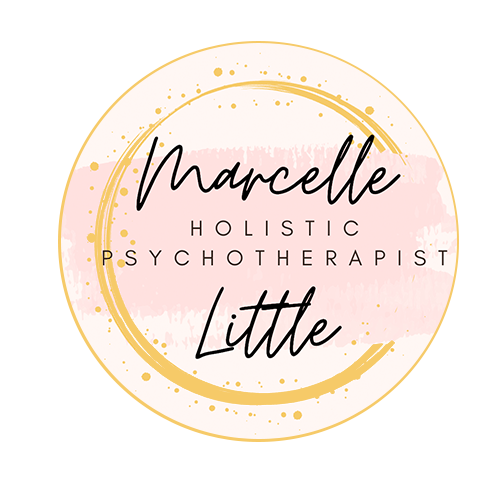Understanding the Connection Between Emotional Regulation and Mental Health
What is Emotional Regulation?
Emotional regulation refers to the processes by which individuals influence their emotions—how they experience and express them. It encompasses a range of strategies, from cognitive reappraisal to mindfulness practices, that foster emotional control and balance. Developing emotional regulation is essential for navigating life's transitions with resilience and cultivating a sense of inner worthiness.
As a psychotherapist specializing in helping compassionate individuals step into their full power, I integrate somatic practices, Internal Family Systems (IFS), depth psychology, and Eye Movement Desensitization and Reprocessing (EMDR) to support clients in developing these vital skills. My practice, serving California and Florida, focuses on guiding compassionate individuals to step into their full power, cultivate a sense of worthiness, and navigate life transitions with confidence.
Understanding Emotional Regulation
At its core, emotional regulation involves awareness of one's emotional state. This means recognizing feelings as they arise, understanding their sources, and appreciating their potential impacts. Awareness is the first step to mastering one’s emotional landscape, empowering individuals to respond thoughtfully instead of reacting impulsively.
Crucially, emotional regulation isn’t about suppressing emotions. Instead, it embodies a nuanced understanding of emotions, allowing individuals to label, process, and express their feelings constructively. For example, naming emotions helps separate feelings from the circumstances that triggered them, fostering clarity and empowerment.
The Science Behind Emotional Regulation: Polyvagal Theory and Emotional Resilience
Dr. Stephen Porges’s Polyvagal Theory provides a scientific lens for understanding emotional regulation. The vagus nerve—a key component of the parasympathetic nervous system—plays a crucial role in managing stress and fostering emotional safety. According to this theory, a well-regulated nervous system enables individuals to shift from survival states (fight, flight, or freeze) to states of connection and calm.
Polyvagal Theory highlights the importance of creating a sense of safety to support emotional regulation. Practices like deep breathing, mindfulness, and grounding techniques can activate the vagus nerve, helping individuals return to a state of balance after experiencing emotional distress.
Key Researchers on Emotional Regulation
Emotional regulation has been extensively studied by researchers such as:
Dr. Marsha Linehan, who developed Dialectical Behavior Therapy (DBT) to teach emotion regulation skills, especially in individuals with intense emotional experiences.
Dr. James Gross, whose work on cognitive reappraisal underscores the importance of reframing thoughts to manage emotions effectively.
Dr. Daniel Siegel, known for integrating mindfulness and neuroscience in emotional regulation, emphasizes the importance of "name it to tame it," or labeling emotions to diffuse their intensity.
These thought leaders emphasize that emotional regulation skills are not innate but can be cultivated through intentional practice and therapeutic support.
The Link Between Emotional Regulation and Mental Health
Research demonstrates a strong connection between emotional regulation and mental health. Effective regulation reduces the risk of anxiety, depression, and stress, while poor emotional regulation often correlates with mental health challenges like borderline personality disorder and post-traumatic stress disorder (PTSD).
This bidirectional relationship suggests that improving emotional regulation not only enhances mental health but also strengthens resilience against future stressors. For instance, individuals with strong emotional regulation skills experience fewer mood swings and better manage life transitions.
Strategies for Improving Emotional Regulation
Enhancing emotional regulation involves integrating practical strategies into daily life, such as:
Mindfulness Meditation: Observing thoughts and feelings without judgment fosters acceptance and reduces emotional reactivity.
Deep Breathing Exercises: Activating the vagus nerve through slow, intentional breaths calms the nervous system and reduces stress.
Cognitive-Behavioral Techniques: Identifying and reframing distorted thinking patterns helps individuals reframe emotional responses.
These strategies align with therapeutic approaches like DBT, which teaches skills in mindfulness, distress tolerance, emotional regulation, and interpersonal effectiveness, and CBT, which addresses thought patterns contributing to emotional dysregulation.
The Role of Therapy in Emotional Regulation
Therapy offers a safe, supportive environment to explore emotional patterns and triggers. Techniques like EMDR and somatic practices help clients process unresolved trauma, fostering deeper emotional awareness and balance. For example, EMDR facilitates the reprocessing of distressing memories, enabling individuals to break free from reactive patterns rooted in past experiences.
Additionally, IFS therapy helps clients connect with their "inner parts," nurturing a sense of self-compassion and empowering them to address emotional challenges from a place of internal harmony. Integrating these modalities into therapy creates a holistic approach to emotional regulation.
Conclusion
Emotional regulation is a cornerstone of mental health and personal growth. By practicing strategies like mindfulness, cognitive reframing, and deep breathing—and engaging in therapy to explore deeper patterns—individuals can cultivate resilience, enhance their relationships, and navigate life’s transitions with confidence.
If you’re ready to step into your full power and cultivate a sense of worthiness, my online practice is here to support you. Together, we can explore the tools and techniques that empower you to master your emotional landscape and lead a more fulfilling life.

